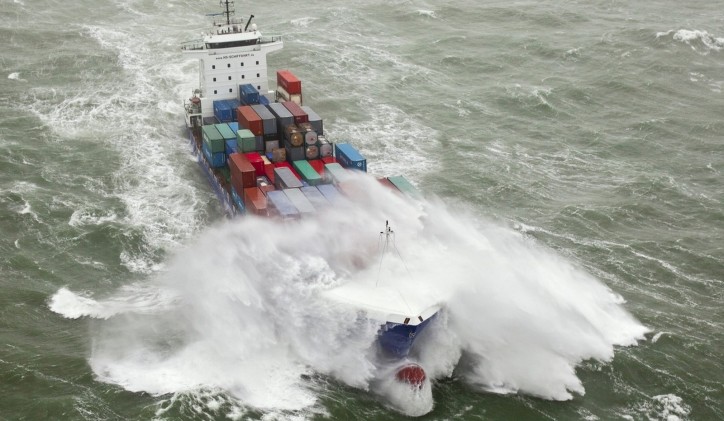Damen’s innovative port solution for ballast water management on course to help compliance with upcoming IMO regulation.
More and more countries are ratifying the IMO’s Ballast Water Management Convention (BWMC) and it is very likely that it may enter into force as early as the first half of 2017; in any case, it is only a matter of time. The shipping community must prepare for a significant challenge to meet its requirements. Damen’s unique InvaSave is an innovative solution that will help pave the way for compliance in ports. This mobile ballast water discharge technology is on track to obtain IMO type approval as it enters into the last phase of certification by the Dutch flagstate.

The InvaSave technology has been successfully tested in various representative challenging water conditions and the official land-based testing was completed at the MEA test institute in the Netherlands in 2015.

Image: InvaSave 300 inside

Image: Damen's InvaSave 300 inside
Damen has announced that final shipboard tests have commenced this week on board of the 800 TEU container vessel Henrike Schepers.

Image: Damen / containership Henrike Schepers
Test protocols are in line with IMO BWMC test guidelines and additional requirements of the Dutch flagstate. Unlike conventional on board ballast water treatment systems, InvaSave is a mobile discharge technology for port services. Therefore, during the shipboard tests ballast water will be taken in untreated and the efficacy of the technology will be validated upon discharge only. IMO type approval is expected to be obtained Q3 2016 and a patent is pending.
Damen’s Manager Ballast Water Treatment, Gert-Jan Oude Egberink says, “InvaSave is the world’s first and only technology on the market today to treat ballast water at discharge in only one step. It can therefore serve as a port-based alternative for those ship owners that may not want to retrofit an on board treatment system, perhaps because their ships operate on non-exempted fixed routes or their ships are so old as to make any investment in such a system prohibitively expensive. Alternatives like InvaSave are also required for ports that need to provide backup in the case of emergencies when ships’ on board treatment systems fail.”
Damen can deliver the InvaSave technology in a self-sufficient mobile container, which can be put onboard a service barge or moved around the port on a trailer or a pontoon.

A vessel needing to discharge its ballast water can connect to the InvaSave unit, which then processes the water and discharges it in the port in compliance with the IMO D2 standard. For vessels with much larger ballast water capacities, it is possible to interconnect several systems. If mobility is not required, the InvaSave containers can also be stacked and interconnected on shore.
In the video below you can see the whole working process of the unique InvaSave Mobile Ballast Water Discharge Technology:
The first InvaSave systems will be operational at Groningen Seaports located in the Dutch Waddensea, a protected Unesco world heritage site, after the IMO BWMC enters into force. This project is developed with the aid of a subsidy from Waddenfonds, a Dutch foundation that aims to protect and develop the ecology and economy of the region. The port service shall be provided by the Dutch waste company Van Gansewinkel.
Mr Oude Egberink: “Port-based ballast water treatment has added value for ports clients as it increases the support services offered to customers, it will prevent expensive delays in ports caused by failing onboard systems. And some types of vessels don’t need to invest in an onboard BWT system at all.”
Source: damen.com